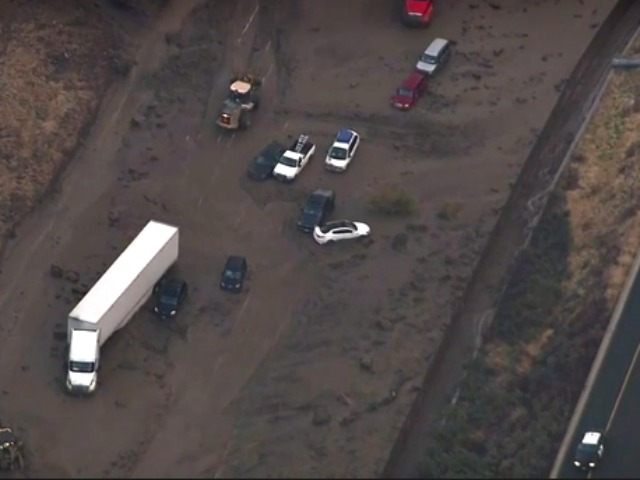Southern California motorists were left stranded on highways Thursday, as drenching rain and golf ball-sized hail bore down on the area, causing dangerous flash floods.
According to CNN, between 4-6 inches of rain fell in parts of Kern and Los Angeles counties Thursday, leading to the closure of a stretch of Interstate 5. Drivers were literally stuck in their cars as a deluge of mud and debris cascaded down the area’s hilly terrain. The Los Angeles County Fire Department and the Los Angeles County Emergency Management team worked to rescue drivers caught in the flooding.
“It’s possible that someone could have lived in SoCal all of their lives and never have seen this size hail,” National Weather Service meteorologist Joe Sirard told CNN. “If this area does see hail, it is the size of a dime. Definitely no bigger than a quarter.”
Thursday’s flash flooding could be a harbinger of more wet weather to come across the state this winter; the same day, the National Oceanic and Atmospheric Administration (NOAA) boosted its prediction of above-average rainfall for much of California, including in areas where the largest state reservoirs are badly depleted.
Scientists had already warned that Southern California is set to see a particularly rainy winter due to the approaching El Niño; but the new predictions put the chances of average or above-average rainfall from January through March in the area between San Jose and Santa Barbara at 83 percent. The chance of average or above-average rainfall between San Jose and Humboldt County through the winter months sits at 73 percent.
While drought-ravaged California could certainly use some rain after four years of cloudless skies, the storms brought on by El Niño could wreak havoc on state roadways and in canyon communities, as it did during the last major El Niño event in 1997.
“History has shown that with these real big El Niños we have seen very big storms, and a lot of landslides and floods,” NOAA’s Mike Halpert told the Contra Costa Times. “That could be something that turns out this winter – that while we’re still dealing with severe drought in California, we’ll be also dealing with flooding at the same time. And that’s certainly not unheard of.”
In July, the National Weather Service put the chance of the coming El Niño becoming the strongest in North America’s recorded history at roughly 60 percent.

COMMENTS
Please let us know if you're having issues with commenting.